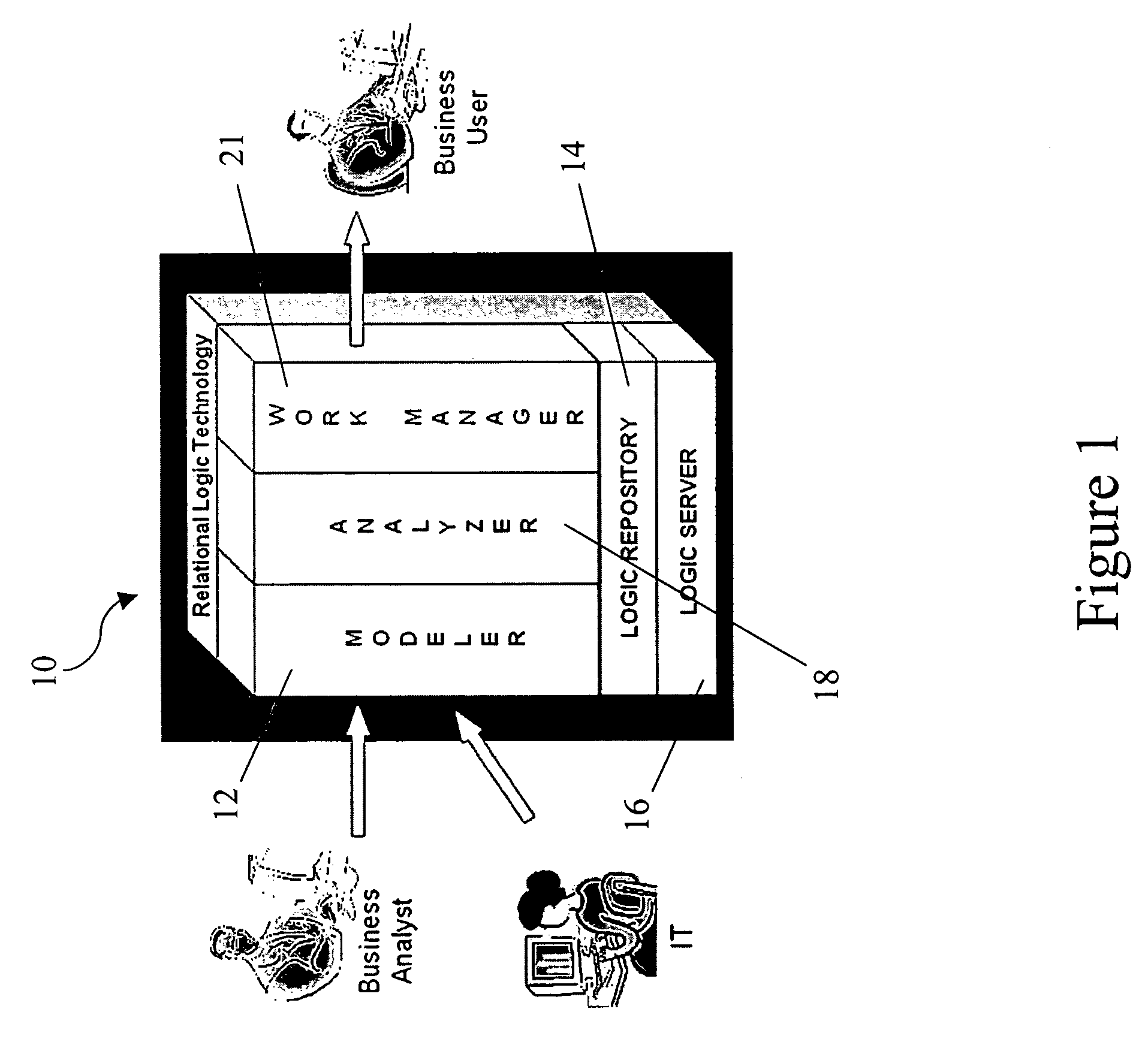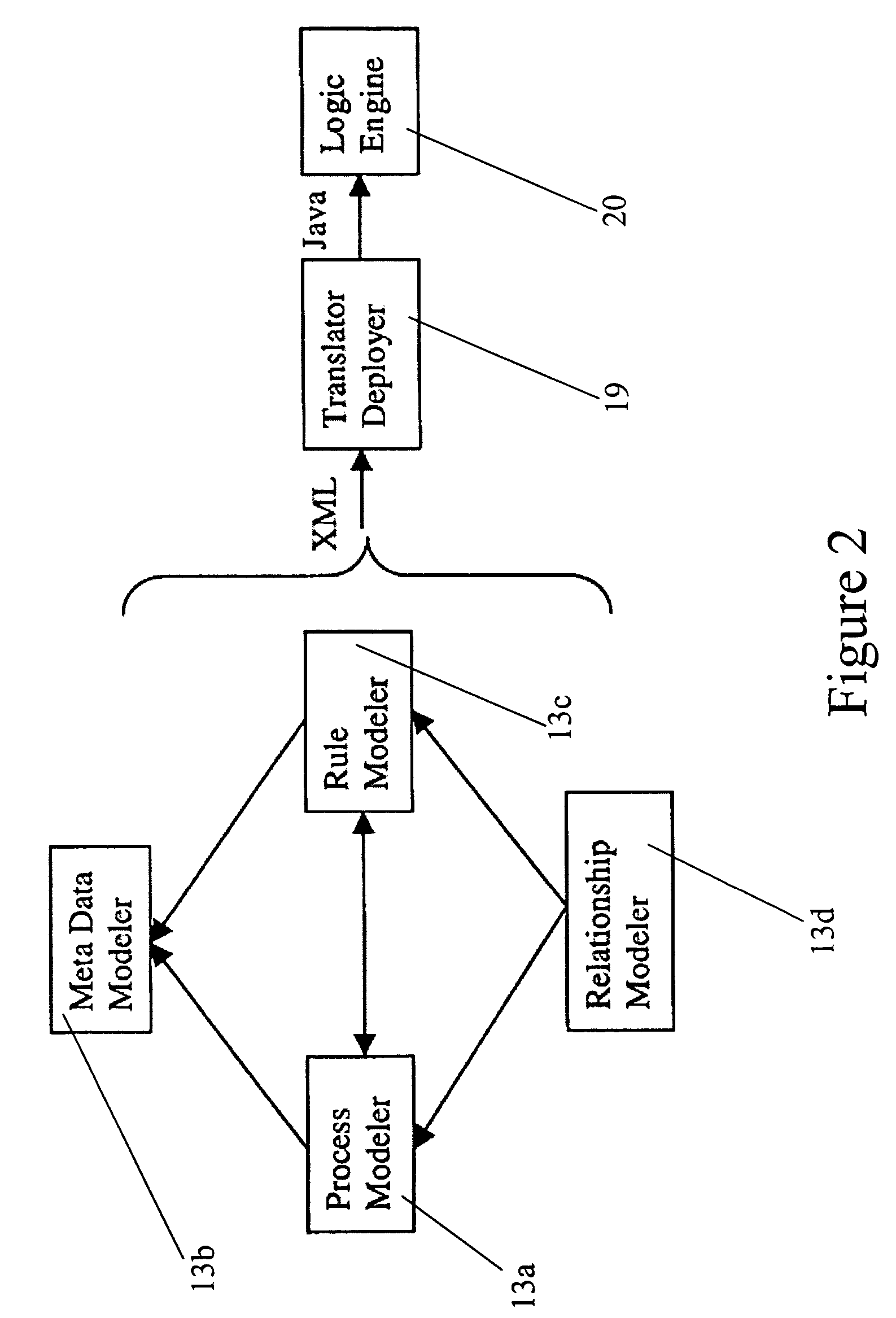Relational logic management system
a logic management system and logic technology, applied in the field of business management, can solve the problems of complex environment of large enterprises, lower customer satisfaction, and higher cos
- Summary
- Abstract
- Description
- Claims
- Application Information
AI Technical Summary
Benefits of technology
Problems solved by technology
Method used
Image
Examples
Embodiment Construction
[0045]The presently preferred and alternative embodiments of the invention, including the best mode for practicing the invention known at this time, are now described in detail in connection with the accompanying drawings. It is, however, expressly noted that the present invention is not limited to these embodiments, but rather the intention is that modifications that are apparent to the person skilled in the art and equivalents thereof are also included.
[0046]The invention includes aspects of a new system, referred to here as a Relational Logic Management System (RLMS), which is, in part, an enhanced Business Process Management Systems. The RLMS provides a modeling environment, execution environment, and logic repository to capture, manage, analyze, distribute and execute business logic. The analysis component of the RLMS is referred to as the relational logic technology (RLT) component of the RLMS. Combining an advanced rules engine and a sophisticated business process management ...
PUM
 Login to View More
Login to View More Abstract
Description
Claims
Application Information
 Login to View More
Login to View More - R&D
- Intellectual Property
- Life Sciences
- Materials
- Tech Scout
- Unparalleled Data Quality
- Higher Quality Content
- 60% Fewer Hallucinations
Browse by: Latest US Patents, China's latest patents, Technical Efficacy Thesaurus, Application Domain, Technology Topic, Popular Technical Reports.
© 2025 PatSnap. All rights reserved.Legal|Privacy policy|Modern Slavery Act Transparency Statement|Sitemap|About US| Contact US: help@patsnap.com



